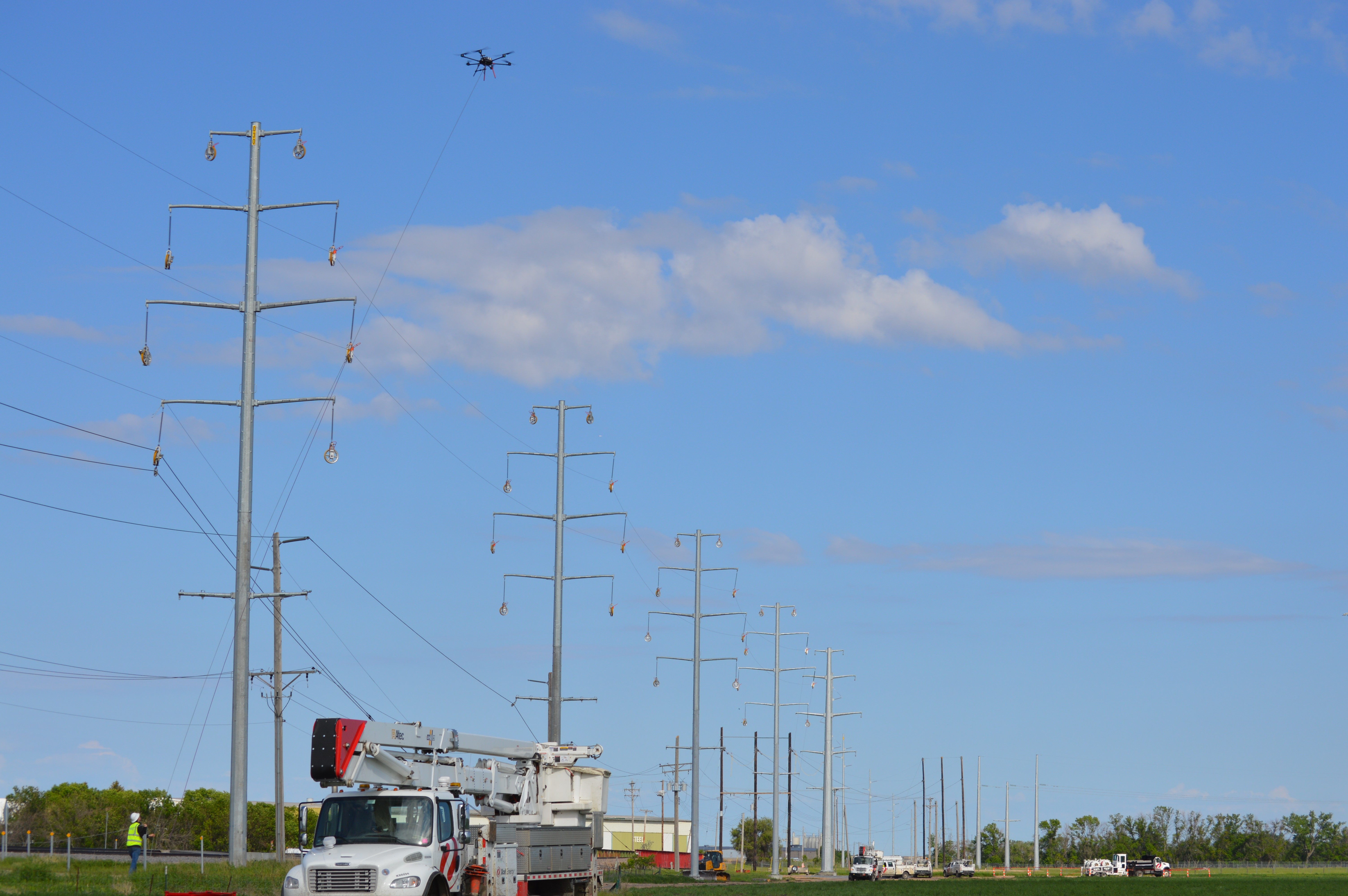Rising to the challenges: Innovative approaches provide new solutions
Building better ways to connect our grid with renewable energy sources

As more remote renewable energy resources of wind farms and solar installations come on line to help answer our goals of lowering carbon emissions; the need for transmission and distribution lines to transport power to customers on the electric grid is paramount.
Whether in the mountains of Colorado, across the plains of North Dakota, or on the backwaters of the Mississippi River in Wisconsin, Xcel Energy transmission crews and contractors are coming up with innovative ways to tackle various construction challenges, helping bring renewable energy to populated areas where it’s needed.
Taking to the skies for minimal environmental intrusion in the Rocky Mountains.
In the Boulder, Colorado area Xcel Energy is using a helicopter to assist in replacing transmission poles along steep, rocky slopes. The helicopters help protect sensitive environmental areas, save time and enhance public and worker safety.
Another 40 transmission and distribution structures are being replaced in Colorado’s Glenwood Canyon with the help of a helicopter to set the structures, haul in equipment and crews.
“Maintaining our infrastructure is critical to providing our customers the safe, clean, reliable energy they want,” said Xcel Energy’s Michael Lamb, senior vice president Transmission. “When we can minimize environmental impacts by going the extra mile with innovation and saving on future costs it’s a home run.”
Fewer disruptive structures now needed in the delicate backwaters of our nation’s most iconic river.
In Wisconsin, transmission line construction crews were assisted in September by contractor J.F. Brennan Marine Construction, an Erickson heavy-lift helicopter, and a Haverfield support helicopter to replace 2.2 miles of transmission structures in the backwaters of the Mississippi River between Nelson, Wisconsin and Wabasha, Minnesota. The project team utilized an ultra-high strength conductor to increase the span lengths, decreasing by almost 40 percent the total number of structures from 27 to 17. Also, the new design of helical pile and grillage foundations can better withstand water and poor soil conditions, allowing for greater structure capacities
“Reducing the number of structures minimizes our need to access this area for future maintenance and results in fewer structures in the view shed with improved access during public recreational use of the river backwaters,” said Chris Strom, Xcel Energy senior engineer.

Reaching new standards of safety and efficiency.
Near Fargo, North Dakota, a drone was utilized for the first time to help install material on a new transmission line. The drone pulled rope to the installation area, minimizing the need for trucks and crews at each new pole location.
“We are always looking for new innovative ways to use technology to increase efficiency, safety and improve our work,” said Dave Berklund, senior director transmission field operations. “We appreciate everyone’s patience as construction is happening near your homes and businesses. Making these upgrades is important as we are building for the future.”
Just getting started
You can expect more innovative approaches to Xcel Energy’s grid expansion and capabilities as more, clean, carbon-free energy sources are brought on to our system. Learn about how we intend to build a carbon-free future.



